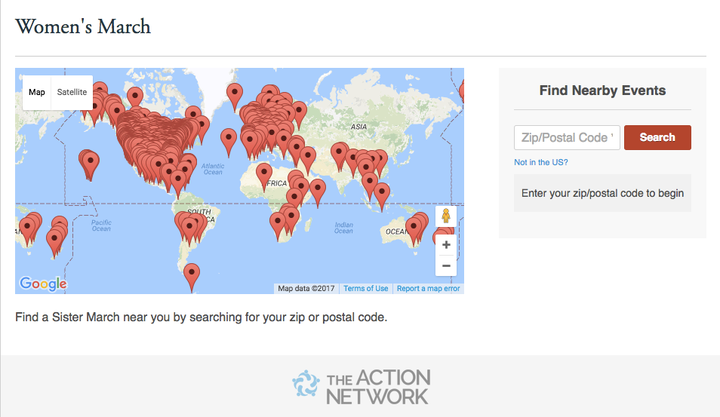
It’s the left’s secret weapon in the continuing resistance.
While Facebook is getting a lot of the credit for making last weekend’s Women’s March happen, a somewhat obscure tech platform called the Action Network was critical to organizers’ efforts. And in the wake of that worldwide protest, the platform is already helping to push the movement forward.
A nonprofit created by progressives who hoped to build a political movement with staying power, the Action Network offers tools for sending emails, organizing marches and events, fundraising, creating petitions, conducting surveys and connecting with other organizers. Activists who use the tools can keep all the email lists and other data they gather ― a feature that Facebook and most other platforms don’t offer.
More than 650 women’s marches in more than 50 countries were organized using the site’s tools last Saturday, according to the network’s own data.
“This was the largest mobilization we’ve ever seen,” Brian Young, the Action Network’s co-founder, told The Huffington Post. Millions of people around the world turned out to march, according to multiple estimates.
Many of the Women’s March organizers used the Action Network’s tools to create embeddable sign-up widgets and maps, like the ones below, that helped spread the word about the events.

Now they’re using the site’s tools to get marchers to sign on for the next things:

As organizers plan new events over the next 100 days, tools like these may help keep the momentum going in a way that Facebook cannot.
Facebook was crucial in mobilizing women after Trump’s election, to be sure. But it can only take activists so far. Theoretically, it’s possible for the pages of one-off events to turn into organizing tools going forward. But it’s much harder for one-off events to connect with each other, as happened in the Saturday marches ― and to stay connected. Plus, Facebook’s algorithms might keep news about future events or marches off your feed.
The Action Network, by relying on email, gives activists a more consistent way to reach local organizers. If you can reach organizers, you can reach the marchers, and you can bring them back to the streets ― or the ballot box.
“The marches that happened all over the world and in the U.S. are a great example of where grassroots organizing and technology combined can mobilize many,” Ceci Hall, who worked to organize sister marches this past weekend, told HuffPost in an email.
“As each march formed, we had the tools and support for them to take ownership of their march on the website,” Hall said. “This was way more effective and powerful [than] would have been possible even 5 years ago.”
Organizers like Hall also made use of Eventbrite, the chat tool Slack and an app called Rally, which helped people organize transportation.
Brian Young, who’d worked on digital campaigns for John Kerry and Howard Dean, co-founded the Action Network in 2012. At the time, progressives were frustrated with how Occupy Wall Street had waned as a movement after the protesters packed up. The idea was to create something that would give activists an infrastructure that could help build lasting movements.
For those tracking progressive politics closely, it may not be surprising that the Action Network became the platform of choice. (It can also be used by journalists: One of the authors of this article uses the Action Network to send his newsletter to subscribers, which is how we noticed the platform’s ubiquity during the Women’s Marches.) It was used to organize rallies against the Keystone XL pipeline and the Dakota Access Pipeline, and to arrange the 2012 Black Friday protests against Walmarts around the country, which stunned observers with their breadth.
“But all of those were just road testing the tools for the moment we’re in now,” Young said.
While the pipeline and wage battles advanced under President Barack Obama, the Trump administration is now vowing to reverse that progress. Whether the infrastructure built during the initial protests is able to withstand this renewed pressure will to some extent determine how far Trump is able to push.
Following the outpouring of support, Women’s March organizers are brimming with confidence, though it remains to be seen where the movement goes from here.
Sociologist Zeynep Tufekci, a leading expert on the relationship between social media and political movements, has found the former to be both a blessing and a curse for the latter.
While Facebook and Twitter enabled protest movements to scale up rapidly in places like Tahrir Square in Egypt, the Maidan in Ukraine and Gezi Park in Tufekci’s native Turkey, she has found that such easily organized networks tend to prove fragile ― that they can be broken by a combination of government pressure and bitter internecine fights among allies within Facebook threads.
In the days before social media, nascent movements took much longer to grow to serious scale. But once they did, their bonds were stronger than much of what exists today.
Moving from Facebook to an email network ― going back in time, in some ways ― could actually end up moving things forward.